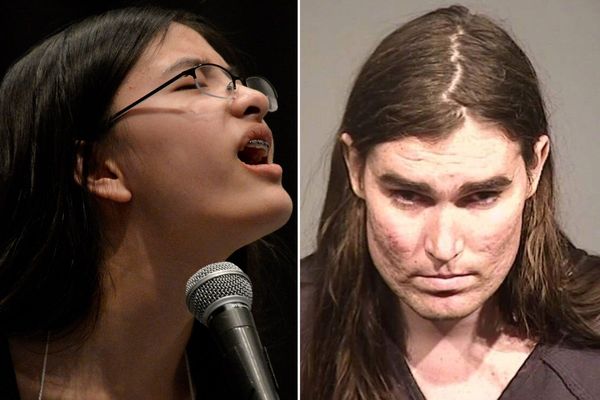
Now in its fifth installment across more than a decade with The Red Door, the Insidious franchise boasts an impressive longevity, albeit in a way more damning than damned. The big horror series prolong their popularity on the strength of a monster (Freddy, Jason, Michael Myers and the rest of the Halloween costume perennials) or a narrative device (the self-inflicted torture of Saw, the Rube Goldberg inevitability of fate in Final Destination), but the Insidious pictures have yielded four windfalls over $100m despite a lack of any distinctive features. The unifying premise for hit factory Blumhouse’s reliable yet reliably uninteresting moneymaker dares viewers to wonder “what if there was a creepy thing that jumped out at you, then disappeared?” The closest it gets to a recurring mascot is a Darth Maul-looking phantom alternately referred to by fans as The Man With Fire in His Face, Lipstick-Face Demon, The Red-Faced Demon, or Sixtass, and in any case, he’s pretty light on charisma.
The first few chapters benefited hugely from the steady directorial hands of James Wan and Leigh Whannell, genre guys with strong fundamentals who knew how to use the camera to coax every iota of tension from material unremarkable on paper. This time around, the star Patrick Wilson takes the reins and reveals just how little has held the property together up to this point. Without innovative blocking and framing, each scene follows a rote repetition as clichés of studio-horror storytelling cue up the oldest scares in the book. Some lumpy mumbling about repression and cycles of generational trauma, a figure appears out of focus in the background, a moment of silence to foster a false sense of security, and then the cinematic equivalent of grabbing someone’s shoulders and screaming “BOO!” in their ear. If these cheap tricks garner a reaction at all, it’s to their suddenness and loudness, a knee-jerk agitation nowhere near as affecting as true, unleaded terror.
To his credit and ultimate detriment, the actor-turned-cineaste Wilson set out to make something more pointed from a setup that hasn’t been about much of anything in the past, only to get bogged down in wormy metaphor. Shortly after the conclusion of the second film – the convoluted chronology of sequels and prequels doesn’t gum up the works too badly, at least – the Lambert family has agreed to submit to therapeutic hypnosis so that they might forget the harrowing events they’ve just survived. Ten years later, and Josh (Wilson) has split from Renai (a scant Rose Byrne), while their son Dalton (Ty Simpkins) has grown into a sullen, resentful teenager rolling his eyes through visits with Dad. As a last-ditch attempt to bond, Josh takes it upon himself to drive Dalton to campus for college move-in weekend, and the past decade of dormant dysfunction starts to rear its ugly, Darth Maul head.
The customary gobbledygook about astral projection now buttresses stale subtext concerning the danger of pushing down painful memories, and the struggle to disrupt patterns of inherited injury. This facile psychologizing ties together the most done-to-death notions in contemporary horror, and they’re only worsened by their articulation in half-baked metaphysics and dumbed-down symbolism. When Wilson wants to telegraph that peril is imminent, for example, he color-grades the entire frame to a bright, sanguine red. In his defense, he’s working with the shoddiest script in the Insidious canon, courtesy of the Firestarter and Halloween Kills scribe Scott Teems. The college setting quickly becomes counterintuitive, separating Dalton and Josh in their own threads of plot that leave the action halting and disjointed. (The concept also saddles Dalton with a sidekick who speaks in faux-clever dialogue so irritating that her ongoing survival comes to feel like a missed opportunity.) The writing expends more effort on teasing out the logistics of seeing dead people than making the phenomenon frightening or emotionally resonant. The shambling corpses may as well be bags of meat rather than reanimated people.
Wilson incorporates minor brushstrokes that evince a respect for genre history from a guy who claims Poltergeist as one of his favorite movies, from the ominous font choices to the received Polanski-isms. But even as a lifelong student of the arts with a clear affection for his work, he brings no hint of an individual sensibility to his reintroduction as film-maker, the exception being an over-fondness for pushy facial closeups that’s long been the dead giveaway of an actor taking to the other side of the camera. As he attempts to massage a message into a flimsy container, he shows that he has little to say for himself. A first film from someone with a lifetime of experience on sets and stages should be packed with ideas itching to free themselves; Wilson comes at this like the star of a TV show who’s watched them make it for long enough that he figures he could do it himself.
Insidious: The Red Door is now out in US and UK cinemas







